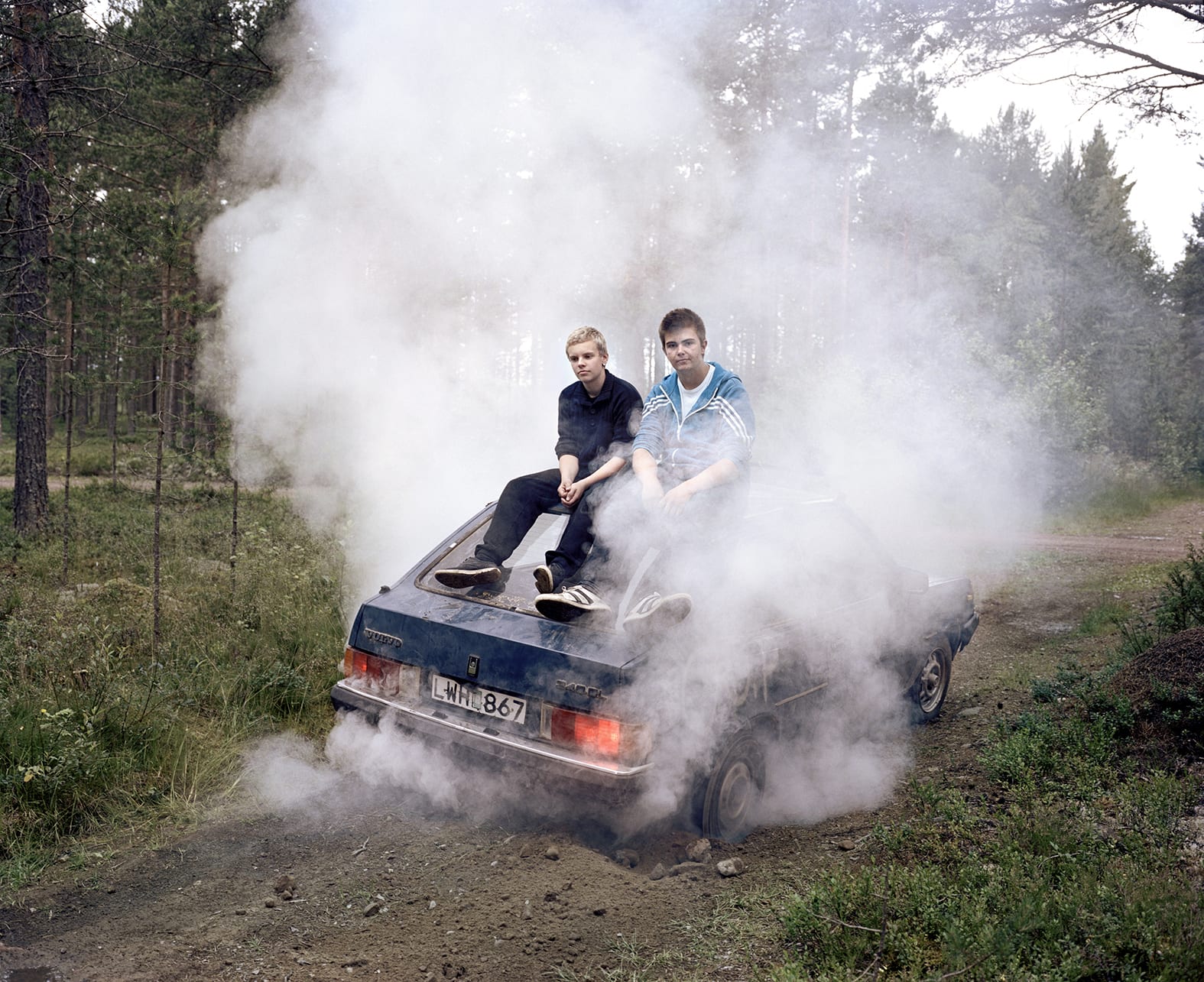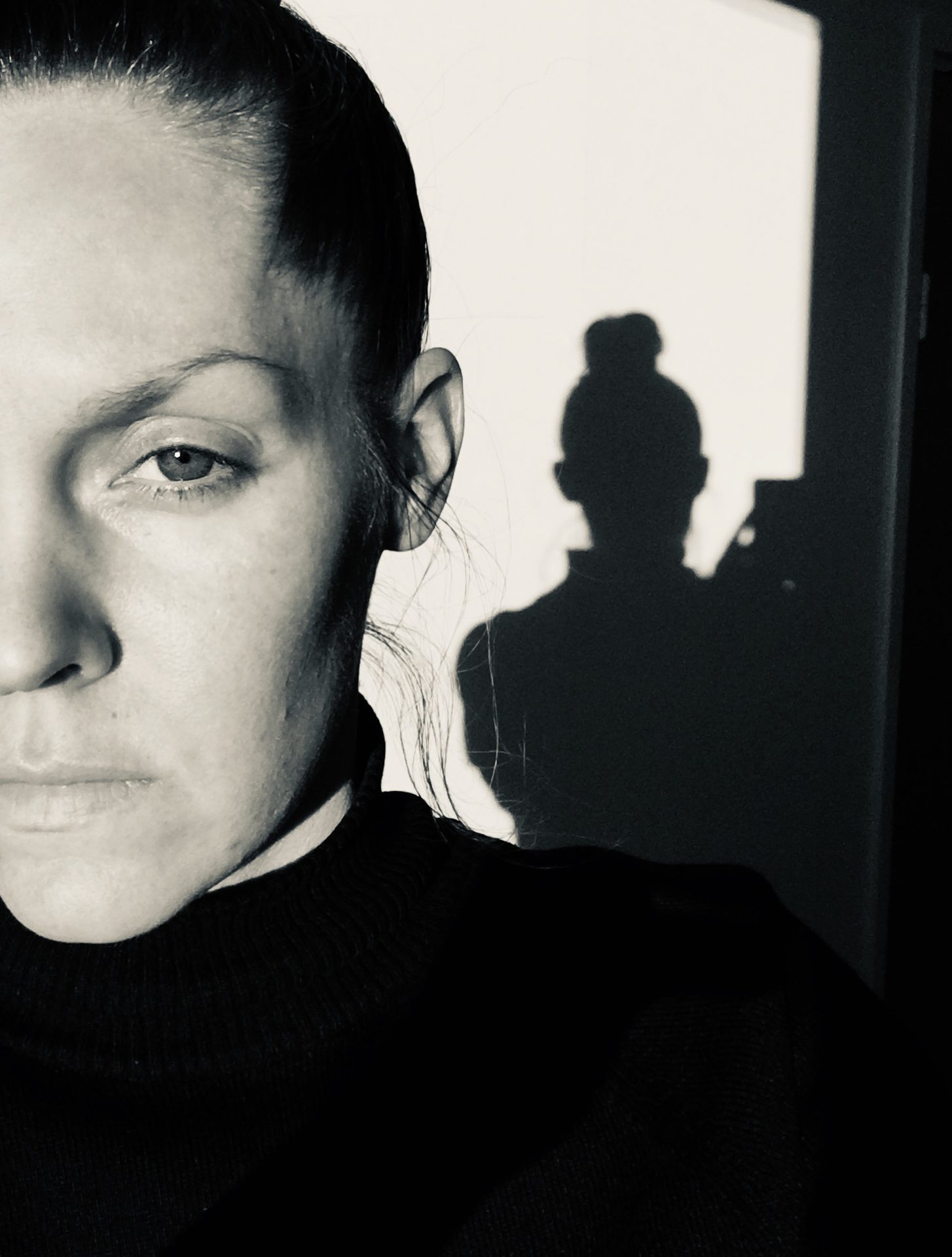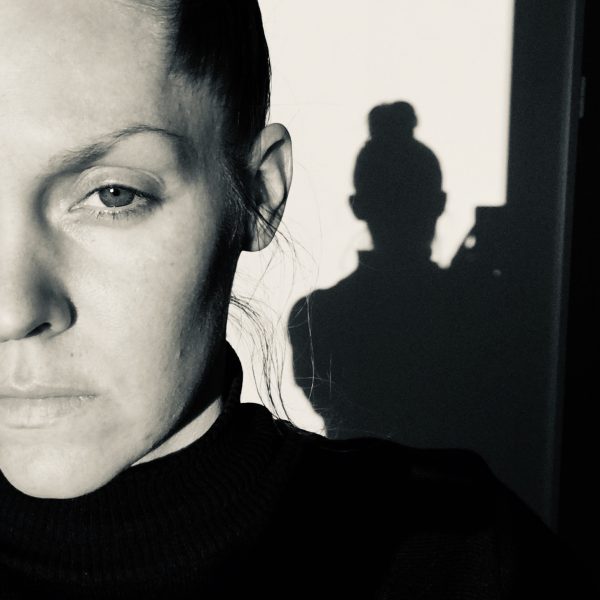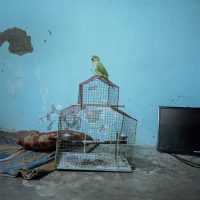I spoke with Maja Daniels about her wonderful book Elf Dalia published by MACK.
*****Please consider supporting this episode by making a donation. every donation goes to bringing more episodes to light*****
Episode 10: I spoke with Maja Daniels in November in the office of Simon Baker at the Maison Europeene De La Photographie about her wonderful book Elf Dalia published by MACK. The conversation was one of the first in the series when I was thinking of what would become Nearest Truth and it still exemplifies a number of qualities that I want to emphasize about voice, laughter and conversation being excellent antidotes to the times we live in.
In the conversation, we speak about her work in Sweden with the Tenn Lars Persson archive. Maja has successfully woven her photographs to the archival imagery of Persson and the resulting book is composed of strange interludes where folklore meets a fleeting interest in geography and esoteric thought. Persson was interested in the sciences, but also made many studies of local “pagan” folklore. The backdrop to Maja’s book is dense and layered with historical questions about “othering”, witchcraft and the local Älvdalen communities insitence on keeping their unique language during times of political change during the past four centuries. The story and the work are fecund with parable, but also exemplify Daniel’s incredible talent in weaving her own chronology and place with Persson’s.
I have some regret that in my rush to excitement, I often found myself wanting to ask another question before she had finished her sentence and for this I apologize to those of you listening who might feel it was a bit out of place. I have learned quite a bit since November and I hope Maja can forgive this.
Here is an extended interview with Maja originally published on American Suburb X that I conducted with Maja on the same work…
“My initial desire to make this work was my connection and fascination with the language. A language that has existed in my family for hundreds of years but that I do not speak”

Maja Daniels work is somewhat hard to pigeonhole. It’s neither archival, nor documentary, yet shares some sincere research into both traditions. Her book Elf Dalia (MACK) is a journey through her own native Sweden, but also the work of another photographer by the nam of Tenn Lars Persson whom Daniel’s in effect has resurrected. She has combined her own work with his archival imagery and the result is a cryptic journey through Nordic rites, customs, but also the land from which they both find their roots. She covers regional language, but also regional custom and has joined the past with the present in terms of images to a very successful degree. Maja was kind enough to speak with me on many things including photography, but also ritual, customs and isolation….
BF: The first question that I wanted to present to you regards the use of the archive. For your book Elf Dalia, you were able to juxtapose your images that you have taken from the exact same area in which Tenn Lars Persson had made images nearly a century before. In effect, what you have gone is to re-engage the ghosts of the past found in his negatives with your own work, intertwining the images into a semi-historical document culminating in the book itself. What strikes me as interesting about the use of archive material and something that has a nearly supernatural disposition is the way in which two authors (in this case) are able to communicate through their images-indicating a nearly necromantic facility in which the voice of the dead is in exchange with the voice of the living. This supernatural phenomenalization of your work is perhaps slightly towards the ostentatious, but in effect there do seem to be mechanisms as work suggesting a deeper conversation between yourself and Persson who according to your own research also had an interest in occult affairs. When making the work, did you start with his archive or had you already been involved with the process of making images when you discovered the work? Further, if you had known of his work while processing Elf Dalia, were his images or the rhythm in which you were forming a new narrative present when you were assembling it? Did you have past experience in using such an archive? What conditions were to be met for you to use the work and where was it sourced?
MD: I started making work in Älvdalen in 2012 and discovered the archive of Tenn Lars that same year. A few images in the book were made prior to the discovery, but my whole six-year-long process of putting this work together has been very much centered on the communication between his work and mine. His images have influenced the way I make photographs and the sequencing of the work has been developed with this conversation, or breathing or co-existence in mind.
My initial desire to make this work was my connection and fascination with the language. A language that has existed in my family for hundreds of years but that I do not speak. When thinking about how to express the idea of language visually, the mixing of the content and the form became increasingly important. The more I began to engage with the many aspects around language (dialogue, conversation, expression, statement etc.) that this book is about, the more this connection between content and form grew. For starters, it had to be a book; an intimate reading in the shape of an expression that is the most personal to me; photography, but it wasn’t until Tenn Lars’ images came into the picture that it all started to really make sense to me. This is really a conversation of sorts. A mute one because I do not speak Elfdalian and visual expression is a fitting communication tool when it comes to preserving tension and mystery, but also, of course, because Tenn Lars and I did not have any conventional communication-capacities at hand. My aim has been to create a performative space where, as you say, the ghosts of the past can co-exist with contemporary life. When I first saw Tenn Lars images I felt the connection straight away. There was a resistance in his work that I recognized in my own. I felt “at home” somehow and completely at ease with the gigantic and scary task (someone else pointed this out to me much later) of putting my contemporary work alongside the lifework of someone who had been dead for a century and whose images already had the “power” of age- Plus, they were generally exceptional.
“This, to me makes the idea of magic less about something supernatural or mystical, or an aspect of modern or post-modern crisis, but rather focuses on an emotional relationship with place through notions of ancestors, folk beliefs and myths”

I have tried to think of the concept of language as a way of relating to what a ‘magical experience’ could mean in the contemporary world. This, to me makes the idea of magic less about something supernatural or mystical, or an aspect of modern or post-modern crisis, but rather focuses on an emotional relationship with place through notions of ancestors, folk beliefs and myths. By mixing my contemporary images with Tenn Lars’ archive my aim was to try to carve out a timeless space whereby mystery, strange events, becomings (past becoming present and vice versa, man becoming animal etc.) and humour can co-exist and where we can think of a ‘magical experience’ as a creative expression, a sort of language.
During the three years when I was living in the cabin in Älvdalen, longer periods of time were spent editing, simply looking at the 5000 glass plates I had been handed on a USB stick and working out ways to create connections. The Elfdalen Heritage Foundation, who are the keepers of the archive (Tenn Lars was one of the founders of the Foundation) also have a rather extensive collection of written documents by Tenn Lars, mainly published articles in the Foundations’ biannual publication. I spent time going through all of those publications, focusing on Tenn Lars’ writings to really absorb his spirit. The publication publishes a lot of oral history, old tales and documented experiences from Älvdalen. This was one of Tenn Lars’ biggest passions; to tell and retell stories. Sometimes they were funny, sometimes witty and sometimes slapstick. In parallel to this Tenn Lars also wrote articles on the topics that interested him, the span is wide and encompasses articles from “the power of the moon on everyday chores” to more technical texts describing “old techniques of iron production”.
I take the risk of sounding a bit weird now but I do actually feel as if I have met Tenn Lars. I do feel like I know him and that he was there with me making this work. Also, risking sounding even weirder, my mother went to see a medium (who had no information about her at all, nonetheless about me and I should say that my mother and I do not share the same surname) to channel some spirits (she does this from time to time). What she got was “a message to pass on to her daughter” from my great-grand father saying he was proud of my work, followed by another message directed to her; that she should not worry, he was looking after me. At this time I had left my life in London to go live in a small cabin in the woods to develop this work. The cabin was not necessarily fit for winter living but I was stubborn and did not care much about the slightly complicated (difficult?) aspects of everyday living. At the time my mother thought I had gone slightly mad but the message from the medium calmed her down. I, on the other hand felt safe and relaxed, despite being alone and a bit “out there” during the winter months. I was living in the 400 year-old log cabin that my great-grandfather had grown up in and could perhaps feel his positive vibe. So, if he was hanging out with me, I am pretty sure Tenn Lars was in the vicinity as well…
Tenn Lars was interested in what used to be called natural magic at the time and this would encompass both science and the occult (knowledge around astrology, alchemy, the hidden power of plants, animals and stones). Despite only five years in school, he pursued self-studies to become an electrician, optician, inventor, photographer and a scientist. In many ways he was a wizard of his time. He brought electricity to Älvdalen and would invite locals to attend lectures in his workshop where he would demonstrate how certain things worked (even deliver electrical shocks to the locals if they paid a few cents), speak about the solar system and the magnetic power of the moon. He was clearly very interested in the moon but this was perhaps not so strange considering how the moon has played an important part in pagan rituals for ages, but also how science in the 1900’s had found new and exciting ways of engaging with the moon. What is more exceptional to me is that he taught himself how to build cameras and lenses and then built a telescope to photograph the moon. The unknown fascinated him, maybe obsessed him and I have always felt that way as well.
The people running the Local Heritage Foundation were encouraging about my engagement with the archive. I approached them with support from certain international connections who had shown early interest in the work so they saw it as a possibility of sharing the unknown work of Tenn Lars to a wider audience. I made it very clear from the start that my approach was going to be an artistic one, where I wanted to appropriate the work and combine it with my own. I am not an art historian who would focus on the work in a more classical way, but I also tried to emphasize that I hoped that further engagements (perhaps through me but not necessarily from me) could come out of this first stage. I also held school-workshops with Älvdalens’ 10 and 11-year-olds where they, too, got the chance to “activate the archive” and make their own stories based on Tenn Lars’ images. It was popular mainly because the archive is so wonderfully strange, not just to me but to most people who start to engage with it. Tenn Lars is showing off so many of his own interests and rumination within it as well as his sense of humour and wacky personality.
I had no previous experience in working with archives but I think it is something I am interested in taking further since it has such a wonderful way of creating connections to both the past but also to the future. It can also serve as a way of resolving some of the issues that I have had in the past when it comes to carving out a creative space within photography that goes beyond the silly dichotomy of fact and fiction. Most of my attempts to make work after this experience is engaging with archival material, both still and moving. My most recent addition to this work is a video installation piece where I am revisiting my own archive of video footage that I collected obsessively but aimlessly during a period in 2015-2016 but then left to be processed by time. I collaborated with a sound artist, Jonathan Maurice, who had emailed me out of the blue a few years ago with a whole playlist of sounds that he had made inspired by my image of the boys sitting on the car burning tires (it is in the book). I loved the sound-scapes he had created and I also enjoyed the fact that the connection between us had come out though the work in such a spontaneous way. I asked him if he wanted to collaborate and he immeadiately said yes. We used his sound-scapes as a guide, allowing for them to lead the way for the visuals whilst mixing them with audio and interviews that I had collected from Älvdalen over the years. Of course the recordning of Tenn Lars from 1935 where he speaks about the myth about ”The Black Book of Magic” in Elfdalian is in there. In a way the spontaneous process of contamination and co-existing that we adopted in making the video piece is similar to the way I have worked with Tenn Lars images.
“I had no previous experience in working with archives but I think it is something I am interested in taking further since it has such a wonderful way of creating connections to both the past but also to the future”

BF: That is an incredible, nearly epiphanic amount to digest. I will have to pick through all of this a little bit to pose more questions. The first thing in your response that struck me as interesting is how you refer to the work of Tenn Lars-it is almost as if the channeling and use of his archive casts a longer shadow of the body of work than the whole, which includes your images, which I happen to find quite spectacular. I believe you have fallen in love with a dead man! In all seriousness, this idea of how you commune, not communicate with his work is fascinating. The bond between stretches past ”in the tradition of” and becomes its own powerful discussion about the endurance of custom, but also image and personal mythology.
The second thing that I picked up on about Tenn Lars is that he must have been something of a polymath. I would loved to have seen his library, inspired fancy in no small doubt by John Dee and Leonardo Da Vinci, volumes situated with little doubt amongst older more regional moon magic observers. The moon makes reference throughout the history of photography from Whipple to de La Rue through to Pierre Molinier (another mystic who only printed by moonlight, so the mythology goes), and forward to 1969. These natural magick elements are present in our histories much longer than we suspect and find their roots in ante-diluvian literature and further back in the literature of stones found in various ancient sites throughout the planet.
The third idea I took from your response was about how photography, language and magick all have an in-built, but varying system of relation to belief and communication and how those three contributions posit a force that is combined in your work to produce a mystical environment in which, despite the interest in the science of astronomy counters the paradigm of belief. Science is somehow at war or peace with the natural magick of the text and the images. I see it in the effluvial wanderings of light leaks in both the images by yourself and Tenn Lars-these spindly tentacles of effervescent fluid which mark the ”realities” of the subject of photographic investigation. This perplexing combination begs us to ask the question of what defines history from mythology in traditional environments and how do we come trust or distrust the language of photography, the language of folklore, the language of history and finally, the language of language itself?
What were the most complicated elements of making this project? Was it putting an end to it? Was it determining how to edit the images? Was it gathering the experience to simply create the images themselves or perhaps learning the several languages (image, folkloric and Elfldalian) of Tenn Lars, himself? Do you feel that you have taken from Tenn Lars or that perhaps, he beyond mortality has taken from you, claiming you as a descendent in which his work rises yet again from a place of unknowing?
MD: The connection goes beyond image-making for sure! Maybe it is spiritual, philosophical or probably both. I don’t know if love is the word I’d use but a complete sense of understanding or of “getting him” for sure. It is almost as if we share the same spiritual creative lineage of sorts. As if he’s my wacky ghost-uncle, or brother, or, well, maybe ‘soul-mate’ but with an emphasis on ‘mate’ as in friend. But, sure, there is an element of attraction there… I have always been drawn to people who are openly curious about life, who try to get their head around the big questions, and the small questions and everything in between and the archive Tenn Lars left behind screams of curiosity and a deep fascination with the unknown. I think of our encounter as a “coming home” epiphany of sorts, of totally getting it (his work), but also of making sense of my own trajectory up until that point as well. Having left Sweden quite young to go study abroad, I suddenly and unexpectedly found myself in the stomping grounds of my ancestors feeling at home and making work that seemed meaningful to me after a period in London feeling suffocated within a superficial “struggle of surviving” within the growing bubble of gentrification. I had shared too much space with too many middle class people drinking flat whites in the epicentre of capitalism, who had lost interest in questioning the roots of their privilege. My involvement with Tenn Lars’ work (and how that drove my desire to make my own work) became a vessel that allowed me to find a “way out”. I am forever grateful.
Tenn Lars has been described as “an original” by fellow locals. A kind and helpful man with heaps of knowledge to share. Älvdalen still has its fair share of eccentrics and overall I have not witnessed a particularly strong need to fit in amongst the locals. Rather the opposite actually. In Älvdalen there is a real sense of pride in being different.
“To me, science fits in there too. Generally, I think we tend to ascribe too much truth to science these days. It has in many ways become the replacement of religion in terms of being something unquestionable”.

I’m really glad you point out the connection between language, photography and magic as tools that have the capacity of countering the idea of ”the given”. To me, science fits in there too. Generally, I think we tend to ascribe too much truth to science these days. It has in many ways become the replacement of religion in terms of being something unquestionable. Coming to photography and art through sociology, a lot of my studies have been focussed on unpicking the idea of science, looking at the random nature of science-making (from the very nature of experiment of course, but also looking at how figures and numbers later ascribed to human behaviour – hoping to make sense of it – are actually produced), and trying to break down the barrier that ’Science’ has built up around itself. Having participated in ”making” science in the past I am very aware of its ”creative” too often hidden aspects. Anyone who has dealt with creating statistics for example knows how malleable a task that is. To me, science is a much more creative and human endeavour than what science tries to be or look like (and I think the field of STS -Science and Technology Studies – with Bruno Latour in the forefront are doing an important job in unpicking this and creating visible parallels between science-making and art-making).
Having said that, I really like your reading of the light-leaks that appear throughout the book as these hints of ”realities” that question. Like some sort of ghostlike conscience that pops up and asks the reader to question what is being presented to them. To me, the direct engagement with specific events from Älvdalen’s past are grounded in an urge to question them, to look again and to look differently. These “leaks” became a way for me to allow for something else to be present in the work, to hover over it and to call for a certain hesitation, an unknowing of what we know as ‘History’, or of the photograph as ‘document’.
Historical events highlight a strong local resistance in Älvdalen and the language has clearly played a significant part in this resistance. For example, Älvdalen was the place where the Swedish witch-hunts kicked off in 1668. It was the beginning of a period called “The Great Noise” in Sweden and it all started with 19 girls and one man from Älvdalen being accused of having performed witchcraft. They were all found guilty and executed, beheaded and then burned. The first girl who was accused to be a witch was the 12 year-old Gertrud. A young boy accused her of walking on water. The image and story of Gertrud really etched its way in to my brain. Partly for its religious connotations and visual ‘strength’ but also as a symbolic reminder of how History is made. The fact that there was this mass-hysteria that broke out in Älvdalen in the mid 1600s whereby children played a crucial role in helping the Church decide who was ”good” and who was ”bad” (they were the only ones innocent enough to know who had been copulating with the devil) highlights something revealing about how threatening this place was to the authorities. The Church recruited “wise-boys” whose job it was to spot the witches. The wise boys would stand outside the entrance of the church next to the priest and point at people who would then be arrested. Basically the stationed priest had a really hard time ”controlling the Elfdalians” because they did not speak the same language as him. I have gone through the correspondence between this locally stationed outsider priest and the ”head” priest in Stockholm and the reading is both revealing and scary but also strangely ”contemporary” in its depiction of ”the other” and the need for the authorities to control him/her. Local resistance is often represented historically as tragic events due to the repercussions (punishment by the state/rulers) of such resistance. The idea of paganism, spirituality or witchcraft has therefore been given negative and “dark” connotations historically. To me however, the “darker” periods in the history of Älvdalen clearly represent resistance, strength, resilience and hope.
By re-imagining local history and appropriating Tenn Lars’ images I am in some ways offering up new readings that in turn opens up to multiple more readings. I want the work to question both that, which has already been established as known and that, which has been discarded as not known or not true. By re-staging the act of looking at these archival images, I find that it provides and interesting way of reinforcing both presence and absence, to make different layers of meaning and to allow for the viewer to employ their own imagination in relation to ideas about the past and how we traditionally tend to think of “the Archive” as a somehow neutral space. Of course it is not. The short text at the back of the book serve as a hint to a few events from the past that, in my opinion, make a strong case for the slippery and constant connection between what is established as known or unknown.
As for the most complicated elements of making the project, I think it must be the editing. A lot of images were discarded from the book for extremely subtle reasons. Slight differences in mood or atmosphere could shift the whole reading. However, I am now reusing a lot of what got filtered out in the different iterations of combining our works. For example, some of the images that were not included in the book have now found their way into different exhibition instalments of the work where the images need to serve a very different function than what was needed within the narrative created for the book. The “getting of” Tenn Lars and his world was instinctive, it did not feel complicated or difficult at all.

BF: Yes, dogma, religion and science are kith and kin and refuse to disentangle themselves from the human problem that created them. All are simply a fabricated device for humans to thwart their own mortality in a silly quest for something “more” after our corporeal dissolve. We spend life fighting so hard against the idea of death that we enable a bureaucracy to extol pain, violence and refuse the gift of humility to one another is a desperate quest to be “right” about our fragility. I tend to think the mystical character of many philosophies helps to focus between materiality in the service of alchemy, a deeper appreciation of the physical existence and also the celestial, astrological etc where the grandeur of our perception of the physical universe is honoured as the gift it is without this mortal crutch of complacent denial of its finitude. This is how we come to murder young girls accused of walking on water. That being said, that idea of murdering witches etc has a very long tradition, which is not limited to the fear of the supernatural, but presents an overriding and uncomfortable misogyny. Men were rarely accused of the same supernatural prowess and when they were, they were simply labelled as visionaries, prophets, magicians etc.
On the point of editing and having some access myself to working with archive imagery, I find that you have done a great job in editing the two bodies of work into one book. You have a couple of difficult concepts that you must have overcome from the debating nature of monochrome and color, the presentation between conceptual levels-the magical and scientific and in your work the compunction towards portraiture. The obvious overriding feature is that of time. In a way, the gap you bridged is sort of an update on the area and a continuation of Tenn Lars’ own archive. It certainly adds to the folkloric aspects of the Alvdalen people. I wanted to ask about your own interest in spirituality. Did you come from a Judeo Christian background? Do you have a belief system and if so have you begun to re-examine through this process what your beliefs may be now? I actually wanted to reference a movie that I rather enjoyed called The Ritual, which uses Sweden as a backdrop for what is becoming the natural sublime and its horrific tendencies. There is religion involved, but it’s much older and sinister. I reference it mostly to see if you have seen it, but to also talk widely on Nordic beliefs and your position within them.
MD: Yes, time! What a fascinating concept it is. For some time when leading up to making this work, I felt increasingly annoyed at how the concept of time and photography are traditionally coupled together and how photography gets interpreted in relation to time as something static. For me, photography gets connected with time in its very active cutting of it. By dislocating the continuous flow we still create a very specific material rootedness in time that make us, shape us as ‘selves’. When we cut time, we are doing something; it’s an active and important practice of ‘sculpting’, giving shape to something very specific. In the cut we make certain connections while we separate others. Photography seems to affect me the most when the balance between revealing and concealing are really pushed and experimented with. For me, it is not just about what a photograph shows or represents but what it does. Instead of just thinking of photography in relation to the passage of time and death, it can also be seen as a vital process of life making. So when you suggested earlier that I might have brought some ghosts from the past to life within this work, I am pleased to hear that since I have actively tried to think of the photographic medium as a tool that can make different connections outside of the traditional linear understanding of time. Because of its mute and mysterious nature it has the capability to carve out new passageways in life and of life and as it does it can move us and make us move in various ways.
When I was living the cabin Tenn Lars work moved me to think about time in new ways for sure. The attention brought to the materiality of the photograph (its fragility paralleled to the fragility of a language that is near-extinct), thinking about how to incorporate the elements in the actual image-making (extremely long exposures, creating light-leaks etc.), all of these ‘experimental’ attempts reinforced my connection to the work of Tenn Lars. The way that he was interested in natural magic and how he approached it, mixing astrology, scientific experimentations with electricity and photography as well as engaging with the old myths, fascinated me. Suddenly it seemed absolutely logical to me that the gravity of the moon could have an impact on my life in the same way that it used to play an important part in peoples lives and within pagan rituals. It was commonly “known” previously that tasks such as fishing or chopping wood would have different results depending on how the moon was positioned in relation to earth.
“Time in the forest functions on so many different levels. In some respects it goes faster and in other respects it is much slower than it could ever do in a city. The forest (the landscape) came to represent this ‘constant’ within the book in relation to time and to the language”

My simple ‘being’ in nature also affected my relation in general to time. Time in the forest functions on so many different levels. In some respects it goes faster and in other respects it is much slower than it could ever do in a city. The forest (the landscape) came to represent this ‘constant’ within the book in relation to time and to the language. This is also how and why the text called Myriadmouth written by Swedish author Andrea Lundgren came to be. It was the last thing that was added to the work after quite a long time of contemplation of how to incorporate some sort of third perspective (so as to avoid making the book too dualistic as in me vs. Tenn Lars, black and white vs. colour) into the book. Andrea had previously written both about the forest but also a collection of essays (called ‘Nordic Fauna’) whereby seemingly mundane (at first) depictions of family relationships causes her characters to transform into different animal beings. Man becoming animal. As I discovered her writing, I was really captured by her way of approaching something mystical and strange in such a straightforward and down to earth kind of way. I approached her and shared a lot of my research with her. Quite early on into our conversations, Andrea spoke about an ongoing ambition of hers to write a conjuration (incantation? Spell basically, not sure of the right word). Once she had said that I knew she was the one. I asked her to produce a text where the forest speaks and the text she wrote is in many ways a conjuration. Together with the slightly toned images that start off and end the book (collected infrared images from the game cameras of local hunters) I felt like that nonhuman third perspective could provide the reader with another layer of the work, still alluding to something that is ‘other’, but in a different way.
I am not religious. I come from a typically secular household. No baptism, no confirmation, no communion and no plans whatsoever to get married in church (or anywhere else for that matter). When I was in my teens, my father insisted that I stopped paying the small voluntary church tax (1,02% of the taxable income) as soon as I started earning money. Most people in Sweden just pay this small percentage and don’t think about it, but for my father it was a matter of principle. He thought of himself – and me as an extension of himself clearly – to stand with both feet far outside of the Christian establishment. I think I have fully inherited his positioning of his. It makes sense to me. In a similar vain, I remember having a small crisis the first time that I attended a friends wedding, witnessing the bride being “handed” over to her husband-to-be by her father. It felt so surreal to witness how perfectly intelligent and otherwise sane people chose to submit to such outrageous ‘rituals’ in the name of ‘tradition’. Generally, I carry a profound anger towards all of the horrendous things that have been made in the name of religion, from what happened to 12-year-old Gertrund in Älvdalen to the crusades to seeing how this patriarchal system is still alive and in practice today. Any institution provokes a similar reaction within me and as a result I try to distance myself from such structures of power.
To be spiritual however is probably quite healthy I think since it takes away some of the self-centred importance that man has given to man. I certainly don’t think we humans could be so petty in thinking that we are the only source of power on this earth and beyond.
My grandparents do not believe in ‘natural magic’ per se, but they have grown up with these common “folk believes” and tales that used to function as instructions about how to do certain things and when in order to not upset certain mythical figures or forest creatures. Although they might not fully believe in all of those stories, they have transmitted some of them to me. So, come to think of it, in some respects it sounds like I might have received more of a pagan spiritual upbringing than a traditionally Christian one…
Not sure what to make of all this but in essence, I believe that energies are important and that they can and should be channelled. If my mother wants to communicate with old spirits, talk to mediums about energies and revisit past lives I welcome it with curiosity, if my grand-parents tell me about the importance of keeping the house-trolls happy, I welcome that too. Similarly, if someone finds meaning in ’God’ or in a stone, I feel a respect towards that in terms of what that might bring to them in terms of purpose or meaning. At the end of the day it is just different techniques of storytelling; ways for us to try to make sense of our existence and it points out to what extent we are in fact clueless.
Yes, I did develop a certain level of unease with portraiture within this work because of its close connection to ideas of representation. Clearly, despite the fact that I am placing this work within a specific historical and cultural context, I have no intention or urge to represent a community or a place. A lot of the themes that are touched on in the book come from a personal and creative engagement with my own heredity such as a language that has existed in my family for hundreds of years that I do not know how to speak. This is a personal and emotionally driven kind of work where I am processing some of the questions around identity, language, history and culture that have been brewing inside me for many years prior to the making of the images. The title is an indication that is supposed to hint to this. ‘Elf Dalia’ is a made-up word that derives from the name of the language but refers to a fictional place that I have carved out through the mix of my own photographs and Tenn Lars’ archive. It does not exist in this world as such. Elf Dalia is not an observation of a place at a specific point in time. It is a very personal narration based on imagination, emotion and desire.
In some ways these ‘questions’ of heredity, family and identity construction that I have engaged with in previous works as well are central for my own understanding of ‘Elf Dalia’, and comes across most obviously perhaps in a series of ‘self-portraits’ that did not even make it into the book but that will be shown in an upcoming exhibition. I used pieces from my grandfather’s collection of driftwood and created a number of ‘totems’. I see them as self-portraits; a clear demonstration of the process of identity construction. When assembling these random pieces together, something ‘else’ is brought to life. Traditionally, the totem can serve as a symbolic language but it is also a sacred object that serves as an emblem of a group of people such as a family, clam or lineage with the purpose of reminding them of their ancestry. When I created these figures, I had in mind the symbolic language of the totem that I appropriated in order to convey a message about myself, while knowing fully well that in translation things always shift. They become something else. This ‘shape shifting’ is a quite important and recurring element in Norse mythology. All Gods can change into anything, man, animal, object and do so regularly. Also, according to Norse mythology, the gods created man and woman out of two pieces of driftwood.
Oh, and come to think of it, there is totally a connection there between my ‘totem-figures’ and the film you just made me watch (thank you, sort of…) since it is all about one of those shape-shifting gods. Obviously it’s a horror movie so they made it very dark! And scary! All about one of Loki’s (who sometimes gets translated into the Norse equivalent of the devil) offspring. Whilst it is true that many gods were not worshipped but rather hated or feared, most of them had very complex personalities, a mix of good and bad so that horror-example seem to be just that, a horror example… But, yes, I did enjoy discovering how it looked in the end of the film. Those human hands by the mouth, nice touch. Speaking of those shape-shifting creatures…the double-exposed photograph of a lady dressed in white made by Tenn Lars is for me an illustration of the “lady in the woods”. She would appear in the forest, beautiful from the front but with a hollow back. She is not a friendly character to all humans but her character definitely has both good and bad. The Älvdalen version is called Guenna and her “cave” is located in the mountain right by our family cabin so perhaps she has been watching me for some time…
Maja Daniels
(All Rights Reserved. Text @ Brad Feuerhelm and Maja Daniels. Images @ Maja Daniels.)









